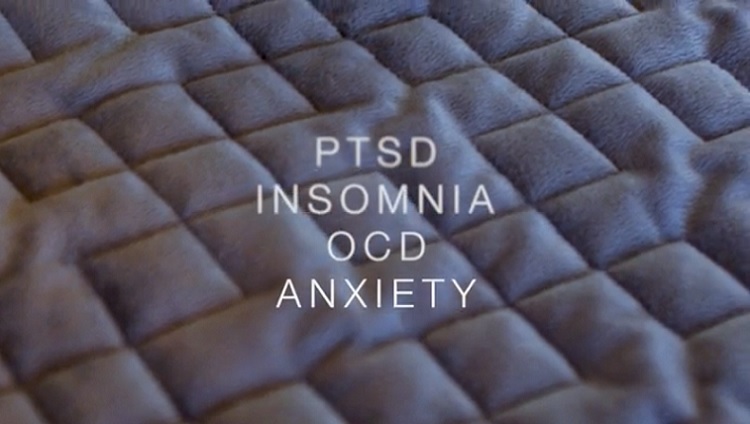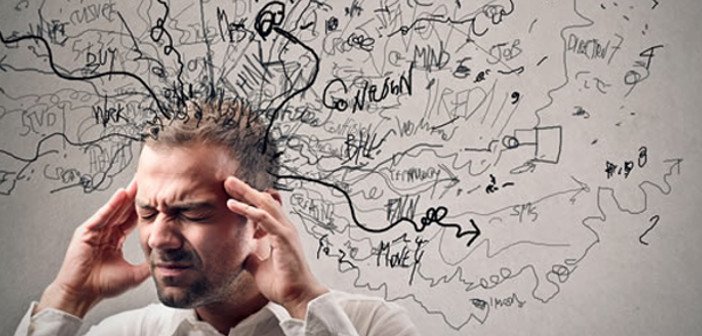Why We’re Being Sold Our Own Anxiety
On February 3rd, 2019, a Twitter account posted a cry for help, ‘I can’t do this anymore.’ The tweet was met with words of tender support: ‘I love you’, ‘Buddy, come hangout’, and ‘What’s going on Sunny?’ There was no reply until the following day, ‘Mood last night. thanks for checking in MP, Ily.’ ‘MP’ stands for ‘Moon Pie’, a saccharine American snack.
This was fake distress and fake compassion contrived to help build the personas of corporate Twitter accounts. The pioneer of corporate sadposting, Sunny Delight, aped the words of someone in the throes of depression, other corporate accounts saw this and quickly followed suit by performing the actions of someone reaching out to a friend in need.
I can’t do this anymore
— SUNNYD (@sunnydelight) February 4, 2019
Times are rough, but I got something that’ll cheer you up #SuperJackdMonday https://t.co/5ZcCdHvE6n pic.twitter.com/TWC0LK3MRX
— Jack Box (@JackBox) February 4, 2019
What would drive a social media team to pretend that they’re a mentally ill soft drink? Simple, anxiety is relatable, anxiety is marketable.
Zeitgeist
50 years ago, anxiety was a practically unheard of condition, but today, along with related conditions like stress, and depression it is now at an epidemic level.
Though there are thousands reasons that a person may find their mental health suffering, environmental factors are one of the biggest contributors. The millennial generation is the first in decades to find themselves worse off, on average, than the one preceding them. Many find themselves in precarious employment, underpaid, overworked, the cost of housing has risen so high that many will never be able to afford a home, and the environment is rapidly collapsing. Considering this, a level of unease isn’t surprising.

Anxiety has always been a stick to beat workers with. The anxiety born from the implicit threat of unemployment keeps workers in line. Anxiety fueled by beauty standards and advertising fuels the profits of the fashion and beauty industries, and the need to escape cloying worry fuels an entire bazaar of entertainment industries from Fortnite to Pornhub. A bit too much anxiety, though, can be a threat.
In times of crisis,where jobs are uncertain, inequality is high, and the future is uncertain, anxiety spikes. Workers go from suitably cowed to overwhelmingly anxious. At this point people will begin to look for a solution and said solution may be uncomfortable for the powers that be. If the levels of anxiety in society rises too high, it goes from a stick, to a lit fuse.
Recuperation
In his book, Capitalist Realism, cultural theorist Mark Fisher compares capitalism to the eponymous ‘thing’ from John Carpenter’s The Thing. In the sci-fi classic, an amorphous alien creature infects living creatures, corrupting and transforming them to suit its own ends. Capitalism does much the same with anything that arises to challenge it be it revolution, resistance, or Kurt Russell.

Of course, unlike The Thing, capitalism isn’t a single malignant will. It’s merely an economic system. However it is a system with rules and incentives that make certain outcomes inevitable. To sell stuff you have to make it appealing to the public and the best way to do that is to ape something they already like (this is why we have Game of Thrones inspired oven pizza ads inflicted on us every time a new season comes out). Of course, what the people like may not be especially compatible with corporate interests, so they need to be sanitised before use. This process of sanitisation is called recuperation.
Recuperation happens when capitalism runs into a threat, absorbs said threat, repackages it, and sells a sanitised version back as a commodity.
We see this with famous figures, cultural events, and cultural moods. In the 60s and 70s, rage drove many social movements. It was rage that spurred the anti-war protestors into action, it was rage that organised the Black Panthers and the civil rights movement, it was rage that motivated the Catholics in Northern Ireland to demand civil rights.
That rage was scooped up, sanitised, and sold back to us. We now see the symbology of the Black Panthers in Beyonce super-bowl shows, Che Guevara tees are worn by CEOs, and the anti-capitalist speeches of MLK incorporated into Dodge truck adverts. The aesthetic of revolution is now a part of the marketer’s tool kit, right next to the awkward Game of Thrones references.
Now, anxiety is the zeitgeist.
https://www.youtube.com/watch?v=dA5Yq1DLSmQ
The Anxiety Economy
The fruit of the recuperation of anxiety is the anxiety economy, a range of products and services that are marketed as a solution to the all-pervading sense of anxiety that exists today.
From fidget spinners and meditation apps to Himalayan salt lamps and CBD, the market is flooded with a huge range of weird tat that promise miraculous, anxiety-killing properties. A stand-out product is the gravity blanket. This product debuted on crowdfunding site, Kickstarter, it is literally just a heavy blanket with evenly distributed weight. Its slick, airy fundraising video claims that it can improve sleep and reduce anxiety. The funding goal for this blanket was around $21,000, but the amount raised was in excess of $4 million because people want to sleep so much that they couldn’t stop throwing money at a weighty blanket.

There is a clear demand for products that can help people deal with their anxiety. People need a respite from the pressure of the modern world, but you’re not going to find that in a blanket. The anxiety economy encompasses more than just products, it has made its way into our workplace too. Employers are now hiring the services of mindfulness gurus to help their beleaguered workers focus their thoughts and reduce their anxiety.
You’re On Your Own
Of course, flogging products of questionable merit, quality, and taste is part of the bedrock of capitalism, but is recuperating anxiety anything to be concerned about? Well, in a vacuum, none of these products are particularly interesting, they’re just part of the grand tradition of snake oil. However, in a broader perspective they can be seen as an example of how mental health is atomised and individualised.
Anxiety, depression, and other related issues are frequently attributed to the individual, they are treated as if they arise spontaneously among people. There seems to be a hesitation to ask if so many people are experiencing these illnesses in such similar ways, in such similar circumstances, is it possible that there is a similar, even systemic, cause?

There is an incentive in capitalism to disguise issues caused by the system as the failings of the individual. You’re not getting paid enough, your rent is skyrocketing, and it’s hard to see things improving in the future; all of these problems are direct consequences of the capitalist system we live under. Your wages are low because the bosses work to keep them low, your rent is high because the housing market has been let loose by a government of landlords, your future looks bleak because it suits capital to keep you precarious.
Taking systemic issues and attributing them to individual circumstances is a massive, and recurring mistake that only serves to hide real solutions. The anxiety economy is part of this obfuscation. By recuperating the trend of anxiety and framing it as an individualised problem with an individualised (and pricey) solution the anxiety economy helps preempt any solidarity movements organising around anxiety.
None of these products will solve our anxiety, many don’t even do much to soothe the symptoms. So, what can we do? There was a time when the emotional zeitgeist was misery. In turn of the century workhouses and factories, misery was as prevalent as anxiety is now.
The conditions those workers lived under were a hundred times more harrowing that what we have to deal with today. The misery was all-pervading, but the workers weaponised it. They used it as the foundations of solidarity and this is what allowed them to cut to the root cause of their circumstances. Recognising that all of us are suffering because of the same reason and banding together to change that is far more effective than any heavy blanket.
